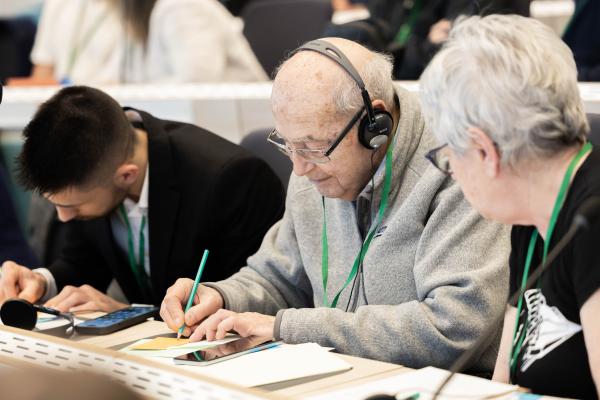Problem addressed
The 'AGRO-EKO-LAB' innovation was created to address the need for schools to equip graduates from technical programs in agriculture and agricultural technology with the skills and competencies required by the job market and consumers.
Small farms face significant challenges and an uncertain future. Adopting new farming methods and finding market-driven sales channels, such as selling organic produce directly to consumer groups, is vital for their survival.
This innovation addresses urgent needs recognized in both agricultural education and the broader agricultural sector:
- Many farmers struggle to make money because they only focus on selling their crops to middlemen at low prices, which can lead them to give up farming altogether.
- Schools mainly teach about large farms growing one type of crop ignoring the benefits of smaller, more sustainable farms with a variety of plants.
- High dropout rates among graduates are influenced by the challenging nature of agricultural work, which often involves irregular hours and work on weekends.
- Fewer and fewer people are signing up for agricultural classes, which results in a reduction in the number of students in classes or even their liquidation.
- There aren't enough teachers, especially in specialized subjects like agriculture.
Innovative solution
The innovation was developed as a micro-innovation by the "Dobre" Food Cooperative Association, then refined and scaled up for broader dissemination. The implementation of the innovation involved both students and teachers.
The developed resources include a textbook, practical workshop scenarios for students (designed for vocational education teachers), structured plans for study visits to farms and cooperatives, and a video highlighting the experiences of farmers who have successfully managed small-scale integrated farms. The manual and innovative lesson plans were developed by an expert group that included representatives of the agricultural industry from different parts of Poland.
The goal was to improve understanding of agricultural practices and direct sales among those involved in the initiative, while fostering collaborative relationships between schools and sustainable farms.
Key results and benefits
The innovation was implemented in 10 vocational schools with an agricultural focus, involving 114 students and 17 vocational subject teachers. Students responded positively, finding it interesting and useful, while teachers view it as a valuable tool that complements the teaching process.
Participation in the 'AGRO-EKO_LAB' innovation allowed participants to broaden their knowledge of natural farming and direct sales while also connecting with organic farm operators and potential customers. It seems that, for at least some participants, the innovation addressed their needs, even if those needs weren't initially recognized at the beginning of the project. Study visits were crucial in this learning process, giving participants the chance to see these practices in action. Overall, most participants fit the innovation's profile—they are children or relatives of small-scale farmers and are likely to inherit these farms in the future.
Undoubtedly, the innovation meets their needs by offering essential knowledge about an alternative and potentially profitable model for farm management and crop sales.
Additionally, this initiative helps to create strong partnerships between farmers and food cooperatives. Encouraging consumers to connect directly with farms and buy products, as suggested by the innovators, could offer a valuable new source of organic produce for these cooperatives.
Potential for mainstreaming
The innovation can be implemented in agricultural schools in other countries. The training materials are designed to be universal, making it possible to adapt them into other languages (currently available only in Polish). Evaluation reports confirm the effectiveness of the method.
However, schools noted some barriers, including:
- Costs related to organizing study visits, especially transportation to farms.
- Limited space to implement the innovation’s goals due to a crowded curriculum.
Despite these challenges, the innovation is highly rated and fully prepared for use in schools.




